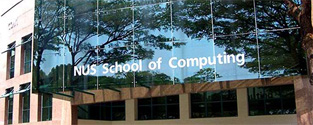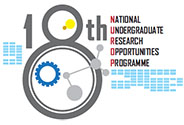National Undergraduate Research Opportunities Programme Congress 2013
Nurop2013@SoC > Plenaray Abstracts
Plenary Abstracts
|
Title |
1 |
Plenary Speaker: Nguyen Quoc Phong
Title: Autonomous Underwater Search for Multiple Targets using AUVs
Supervisor: Assistant Professor Low Kian Hsiang Bryan
Department: Department of Computer Science, School of Computing
Abstract:
Hydrothermal vents are of interest to scientists: They indicate activities of tectonic plates and scientists are also curious about the biological communities around these vents with high temperature and no sunlight. However, it is difficult to localize the hydrothermal vents because they lie deep on the seabed and often require a large search area. To resolve this, an autonomous underwater vehicle (AUV) can be used to localize these vents but an efficient search strategy is necessary to achieve this. The work in this UROP project presents a Partially observable Markov decision process (POMDP)-based search strategy to localize the hydrothermal vents that, in particular, exploits the observations of plumes of various minerals and chemical substances emitted by these vents for finding them. Empirical evaluation shows that our proposed strategy can perform better than and overcome the limitations of a state-of-the-art search strategy.
|
2 |
Plenary Speaker: Png Yi Tian
Title: Natural Killer Cells Therapy for Refractory Acute Leukemia
Supervisor: Associate Professor Ge Ruowen, Dr Seow See Voon
Department: Department of Biological Science, Faculty of Science
Abstract:
Natural killer (NK) cells form part of the human immune system and are involved in tumour immunosurvellience – the recognition and destruction of nascent/transformed tumours. Infusion of in vitro expanded and activated human NK cells is a promising approach for cancer immunotherapy. However, there exist malignant cell types that remained resistant to these stimulated NK cells. With focus on precursor B-lineage acute lymphoblastic leukemia (pre-B-ALL), a NK-resistant malignancy, we investigate if addition of cytokines will overcome pre-B-ALL cells resistance to NK-cell cytotoxicity. Viability of pre-B-ALL cell lines subjected to cytokine treatment (with or without NK cells) was assessed. Out of the cytokines tested, we found that Interleukin-21 (IL-21) was effective in enhancing NK killing of pre-B-ALL cells. Co-treatment of IL-21 with stimulated human NK cells derived from different healthy subjects caused a significant decline in pre-B-ALL cell population after 2-3 days. Together, these results support the use of IL-21 in combination with NK cell-based immunotherapy for the treatment of refractory acute B cell leukemia.
|
3 |
Plenary Speaker: Huang Zhixiang
Title: Energy storage in mesoporous anatase TiO2: Effect of synthesis conditions
Supervisor: Dr Palani Balaya
Department: Engineering Science Program, Faculty of Engineering
Abstract:
Lithium-ion batteries (LIBs) have become the dominant power source at the moment, compared with conventional rechargeable batteries owing to their salient features (Light weight, flexibility in design, high electrochemical potential vs. Li+/Li (4 V) and superior energy density). This technology is now actively pursued for electric vehicle applications (HEV and EV). However, major challenges in implementing the LIB technology for vehicle applications are the safety concerns arising from the current electrode materials. In recent years TiO2 has been considered to be a potential candidate as an anode material for LIBs due to the rapid and highly reversible uptake of Li during insertion/extraction, non-toxic, cheap and flat low-voltage profile with Li. Mesoporous and nanosized electrode materials has been recognized for rapid Li insertion/extraction. In this project mesoporous anatase TiO2 nanostructure synthesized using soft template method for high power/energy density lithium batteries. Cationic surfactant cetyltrimethylammonium bromide (CTAB) have been selected for this investigation to study the ability to assist the formation of the mesoporous-assembled structure. Sintering temperature was varied to alter the crystallinity of the meso-TiO2. Furthermore surfactant to Ti source was varied to optimise the surface area of mesoporous TiO2 electrodes to achieve best electrochemical performance, with excellent cyclic stability and remarkable rate capabilities.
|






